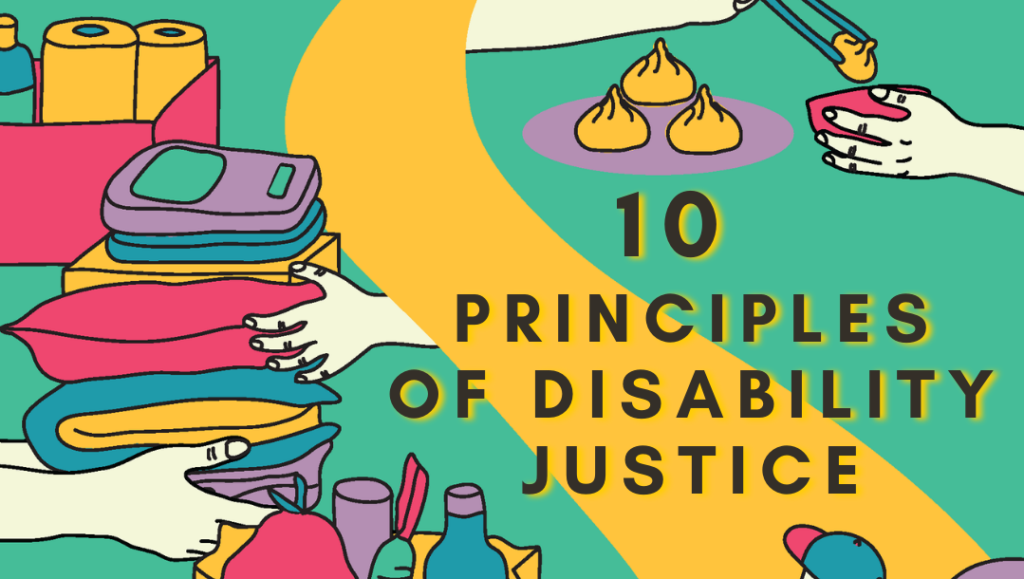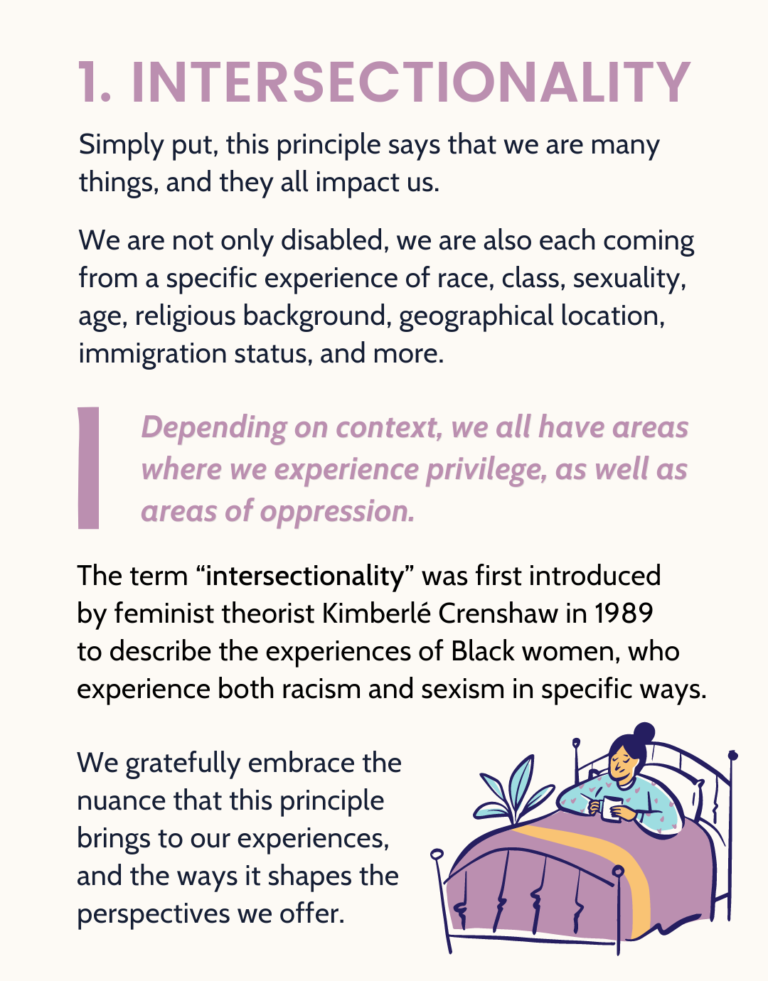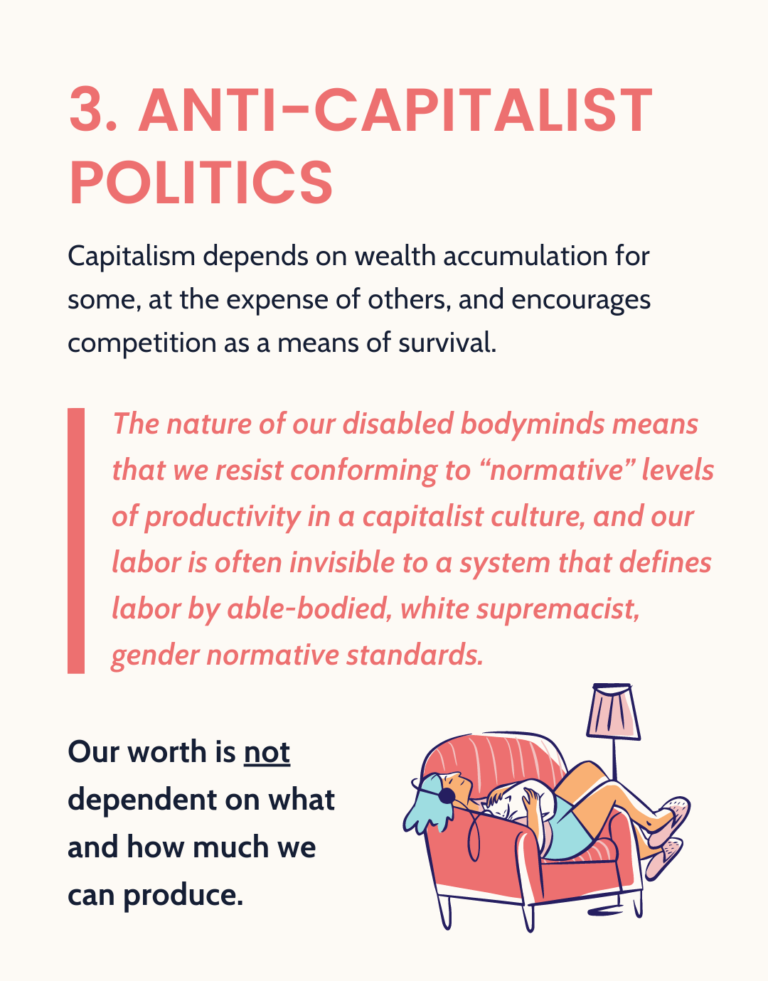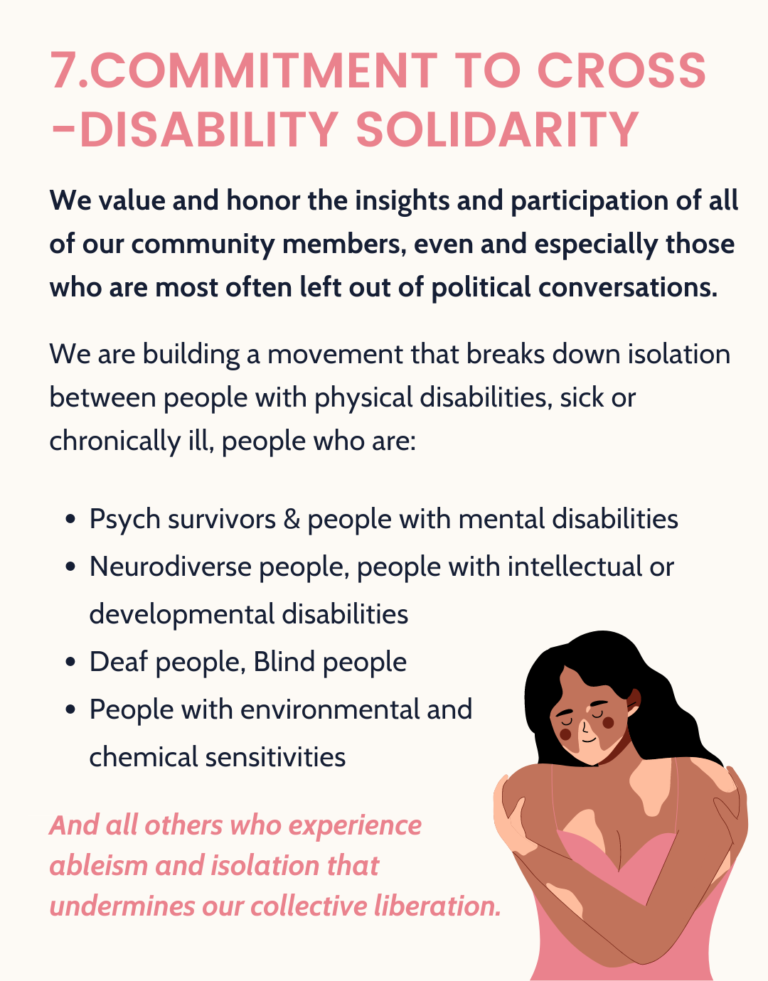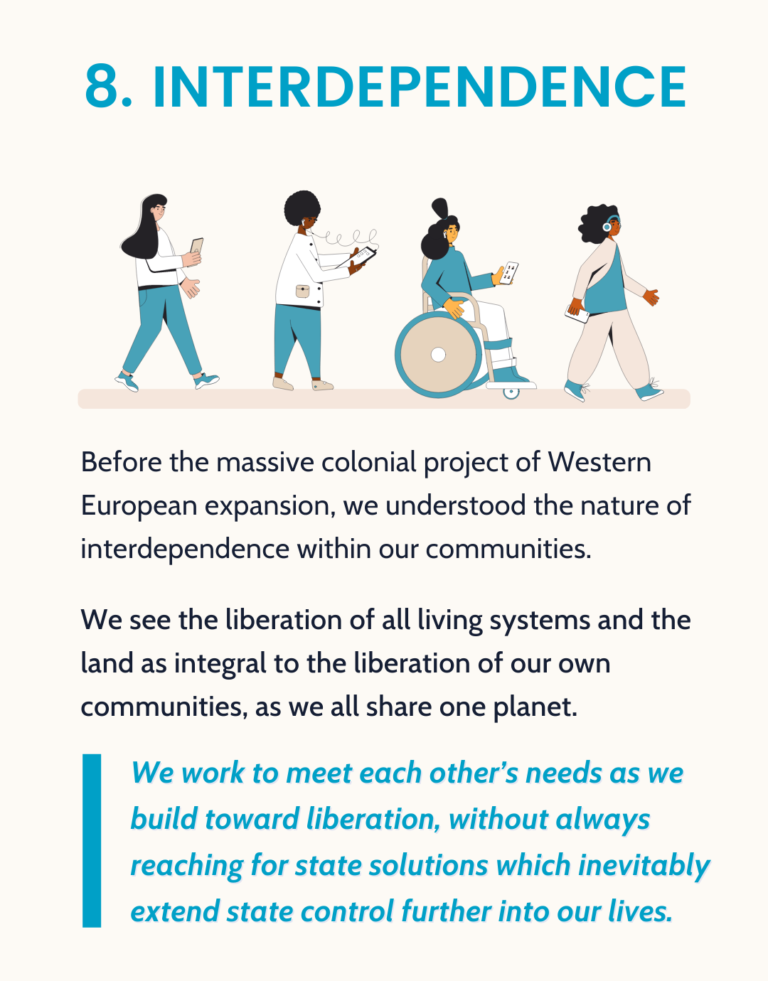Why Disability Justice?
Disability Justice (DJ) is key to ever realizing communism since DJ accounts for people’s different capabilities and needs as they change. DJ explains how hierarchies are all built on “ability” to perform profitable labor; and shows us how to accurately struggle against racial, gendered, imperialist capitalism as it works to mass disable (especially multiply) marginalized folks to “prove” that the White Man is the ideal Human.
Climate change and the ongoing pandemics reinforce why we must embrace DJ to truly include all of us in the struggle–all, who are being left to die slowly or quickly in a “productive” world.
“From each according to [their] ability, to each according to [their] needs”, a quote from Karl Marx’s Critique of the Gotha Programme, is the most effective characterization of how we need to envision a communist society. Marx conceived of a world where differences in people’s capacities for labor would not dictate their quality of life. Yet many radicals have long neglected a political framework that is key to realizing this: Disability Justice (DJ).
Just like race and gender, disability is one way that capitalist oppression manifests and class is experienced. Disability, however, is a class that anyone and everyone over their lifetime can and will enter; and, in fact, our other marginalized identities are manifestations of ableism itself. DJ traces how all political hierarchies are created by the same logics of white supremacist/anti-Black ableism in terms of who is considered capable or incapable of different forms of labor, and systemically values these differences disparately under racial-gendered-imperialist-capitalism.
Ableist logics “explain” and naturalize differences among groups of people as if they are inherently meaningful through pseudoscientific biological, psychological, or character “defects” to hide how capitalism creates the material conditions and attached social meaning that forms classes–whether in terms of race, gender, nationality, ability, or at the intersection of these. It is no wonder, then, why those who embody multiple oppressed identities are more likely to also be descriptively disabled.
If we think a moment on how oppression is never-ending violence and trauma, leading us to be diagnosed with “mental illnesses” and physical impairments, then we can identify that it is capitalism that disables people and enables the temporarily “optimal” desire-able people in service of white supremacy and white colonial ideas of what it means to be Human.
In this way, DJ is an informative lens for materialist analysis since DJ requires a robust understanding of how peoples’ bodyminds and needs are constantly changing based on the material conditions of society and Mother Earth, and has a mechanism that explains how all social structures are interconnected and embodied.
For “from each according to [their] ability, to each according to [their] needs” to be realized, we must live our politics now and forge a culture of radical community care that recognizes and accounts for our different capacities for labor, our different access to capital, and our different needs based on reciprocity–not as a transaction or charity or a mutual aid that is understood only as providing for material needs without much intentional care.
The 10 Principles of DJ, written by Patty Berne and Sins Invalid, provides guidelines for this ever-evolving pursuit, both in interpersonal relationships and in political organizing spaces, and it is of life-or-death significance. Capitalism is a mass-disabling system, and the simultaneous pandemics sped up by climate change has cast an unprecedented light on how it abandons disabled folks without reservation. Our commitment to DJ in this way is long overdue, for a genuine revolutionary politics cannot exist without it.
1. Intersectionality
Simply put, this principle says that we are many things, and they all impact us. We aren’t only disabled, we are also coming from specific experiences of race, class, sexuality, age, religious background, geographical location, immigration status, & more.
Depending on context, we all have areas where we experience privilege, as well as areas of oppression.
The term “intersectionality” was first introduced by feminist theorist Kimberlé Crenshaw in 1989 to describe the experiences of Black women, who experience both racism and sexism in specific ways.
We gratefully embrace the nuance that this principle brings to our lived experiences, and the ways it shapes the perspectives we offer.
2. Leadership of the most impacted
When we talk about ableism, racism, sexism & transmisogyny, colonization, police violence, etc., we are not looking to academics and experts to tell us what’s what — we are lifting up, listening to, reading, following, and highlighting the perspectives of those who are most impacted by the systems we fight against.
By centering the leadership of those most impacted, we keep ourselves grounded in real-world problems and find creative strategies for resistance.
3. Anti-capitalist politics
Capitalism depends on wealth accumulation for some (the white ruling class), at the expense of others, and encourages competition as a means of survival.
The nature of our disabled bodyminds means that we resist conforming to “normative” levels of productivity in a capitalist culture, and our labor is often invisible to a system that defines labor by able-bodied, white supremacist, gender normative standards.
Our worth is not dependent on what and how much we can produce.
4. Cross movement solidarity
Disability justice can only grow into its potential as a movement by aligning itself with:
- Racial justice
- Reproductive justice
- Queer and trans liberation
- Prison abolition
- Environmental justice
- Anti-police terror
- Deaf activism
- Fat liberation, and
- Other movements working for justice and liberation
This means challenging white disability communities around racism and challenging other movements to confront ableism.
Through cross-movement solidarity, we create a united front.
5. Recognizing wholeness
Each person is full of history and life experience. Each person has an internal experience composed of our own thoughts, sensations, emotions, sexual fantasies, perceptions, and quirks.
Disabled people are whole people.
6. Sustainability
We learn to pace ourselves, individually and collectively, to be sustained long-term.
We value the teachings of our bodies and experiences, and use them as a critical guide and reference point to help us move away from urgency and into a deep, slow, transformative, unstoppable wave of justice and liberation.
7. Commitment to Cross-Disability Solidarity
We value & honor the insights and participation of all of our community members, especially those who are most often left out of political conversations.
We are building a movement that breaks down isolation between people with:
- Physical impairments,
- People who are sick or chronically ill,
- Psych survivors and people with mental health disabilities,
- Neurodiverse people,
- People with intellectual or developmental disabilities,
- Deaf people,
- Blind people,
- People with environmental injuries and chemical sensitivities, and
- All others who experience ableism and isolation that undermines our collective liberation.
8. Interdependence
Before the massive colonial Western European expansion, we understood the nature of interdependence within our communities.
We see the liberation of all living systems & the land as integral to the liberation of our own communities, as we all share 1 planet.
We work to meet each other’s needs as we build toward liberation, without always reaching for state solutions which inevitably extend state control further into our lives.
9. Collective Access
As Black and brown and queer crips, we bring flexibility and creative nuance to our engagement with each other.
We create and explore ways of doing things that go beyond able-bodied and neurotypical norms.
Access needs aren’t shameful — we all function differently depending on context and environment.
Access needs can be articulated and met privately, through a collective, or in community, depending upon an individual’s needs, desires, and the capacity of the group.
We can share responsibility for our access needs, we can ask that our needs be met without compromising our integrity, we can balance autonomy while being in community, we can be unafraid of our vulnerabilities, knowing our strengths are respected.
10. Collective Liberation
We move together as people with mixed abilities, multiracial, multi-gendered, mixed class, across the sexual spectrum, with a vision that leaves no bodymind behind.
This is Disability Justice.
We honor the longstanding legacies of resilience and resistance which are the inheritance of all of us whose bodies and minds will not conform. Disability Justice is not yet a broad based popular movement.
Disability Justice is a vision and practice of what is yet-to-be, a map that we create with our ancestors and our great-grandchildren onward, in the width and depth of our multiplicities and histories, A movement towards a world in which everybody and mind is known as valuable.
Sources
Skin, Tooth, and Bone: The Basis of Movement is Our People by Patty Berne and Sins Invalid
Post cover art by @nomnomanh
